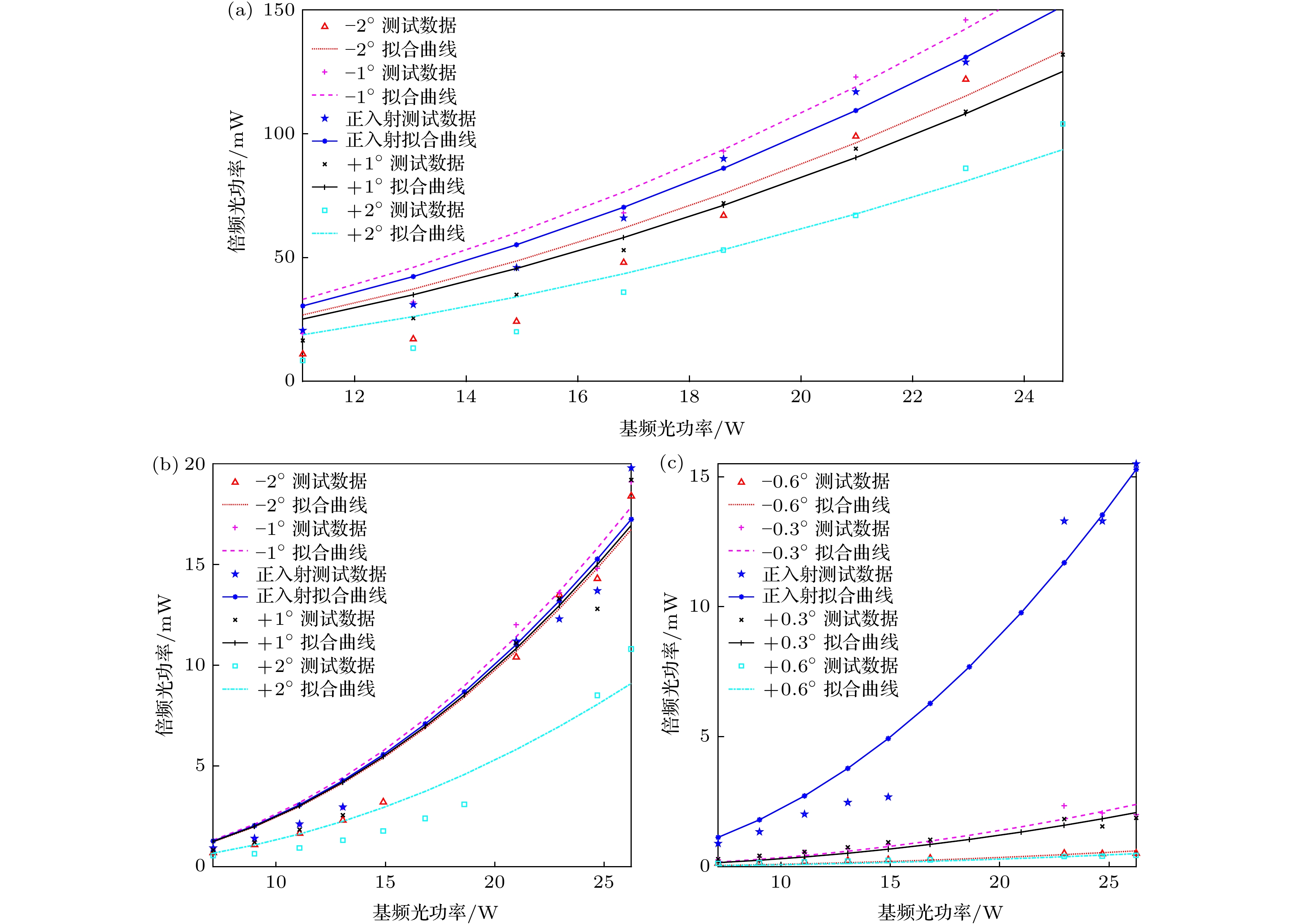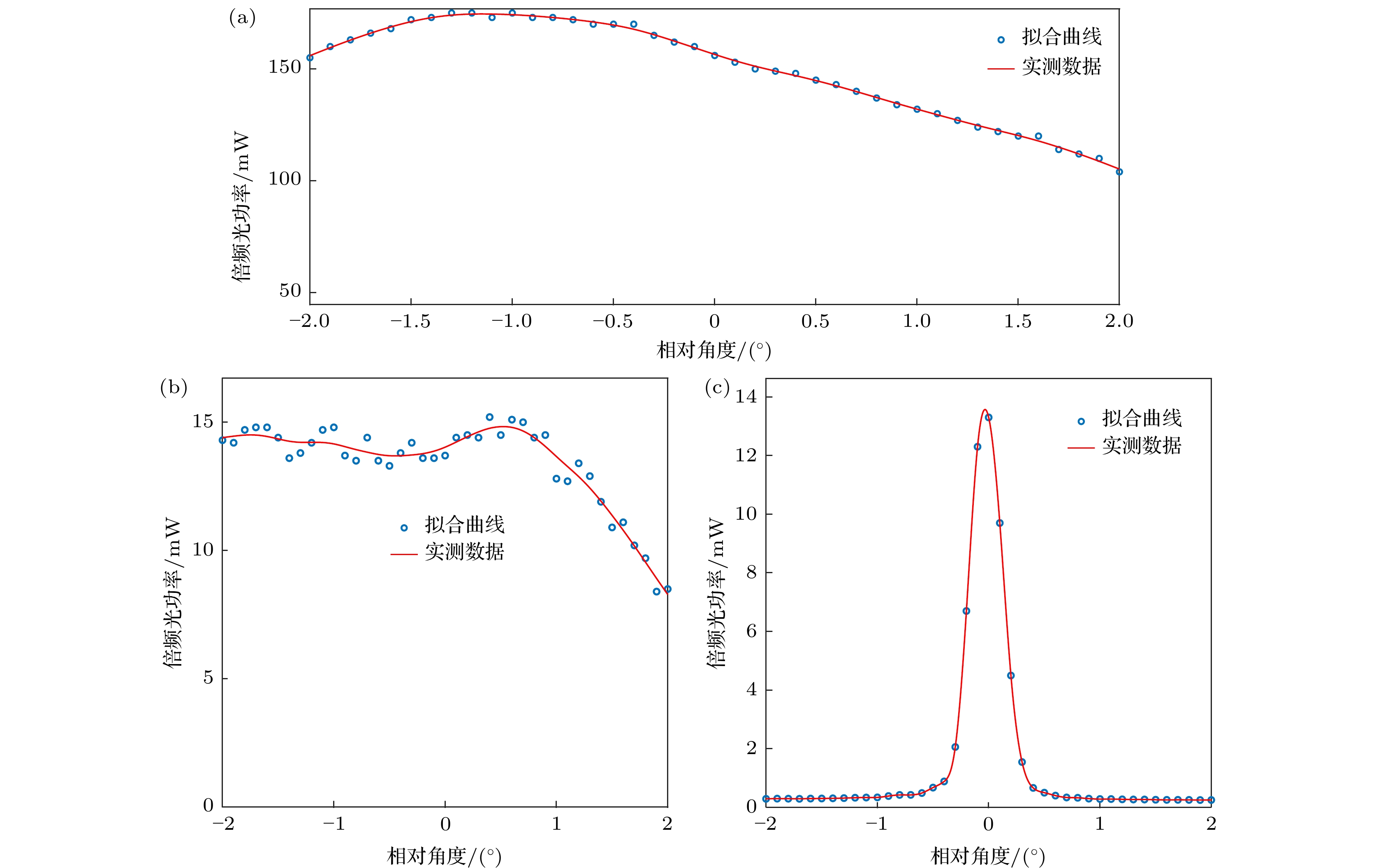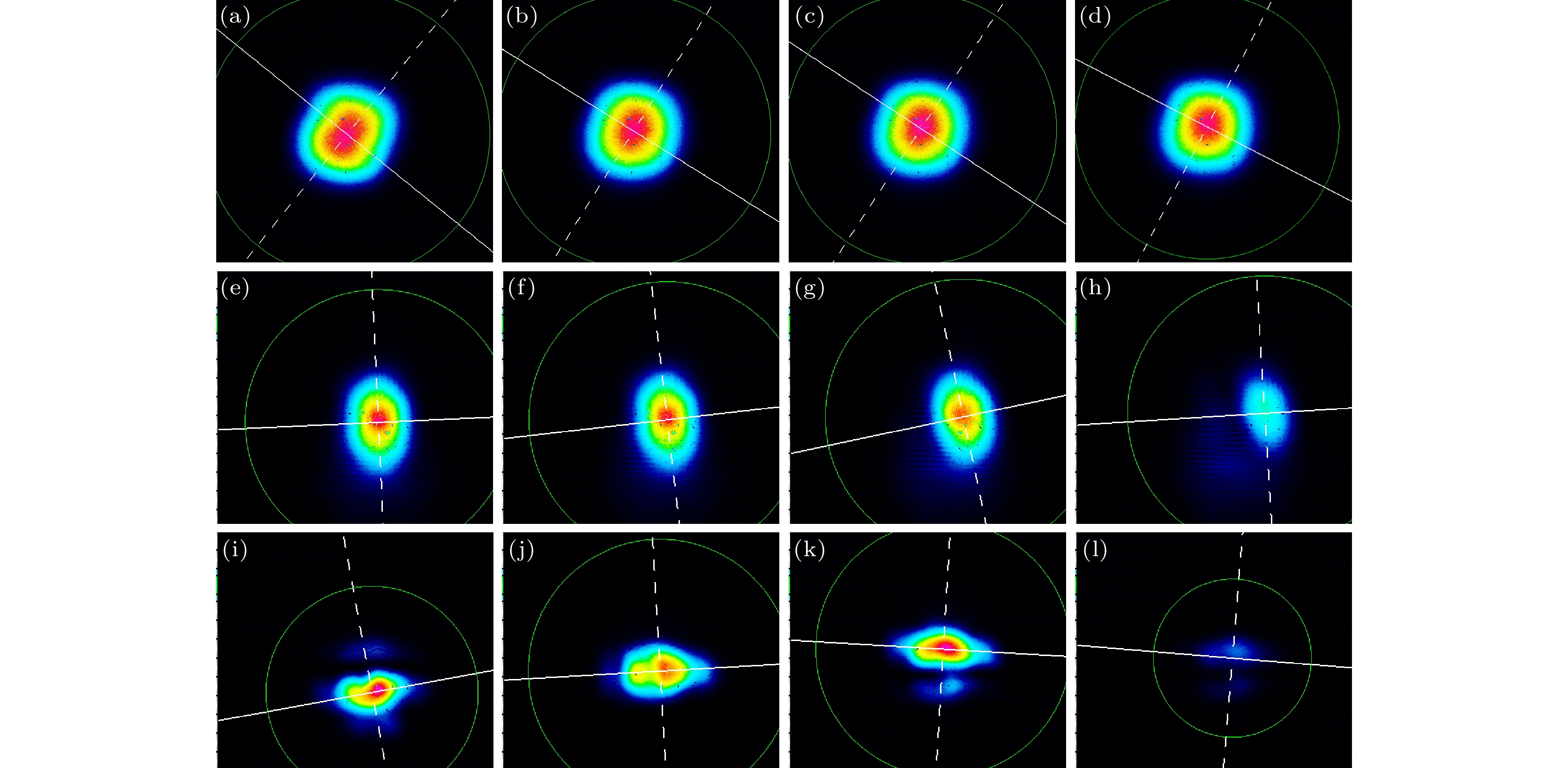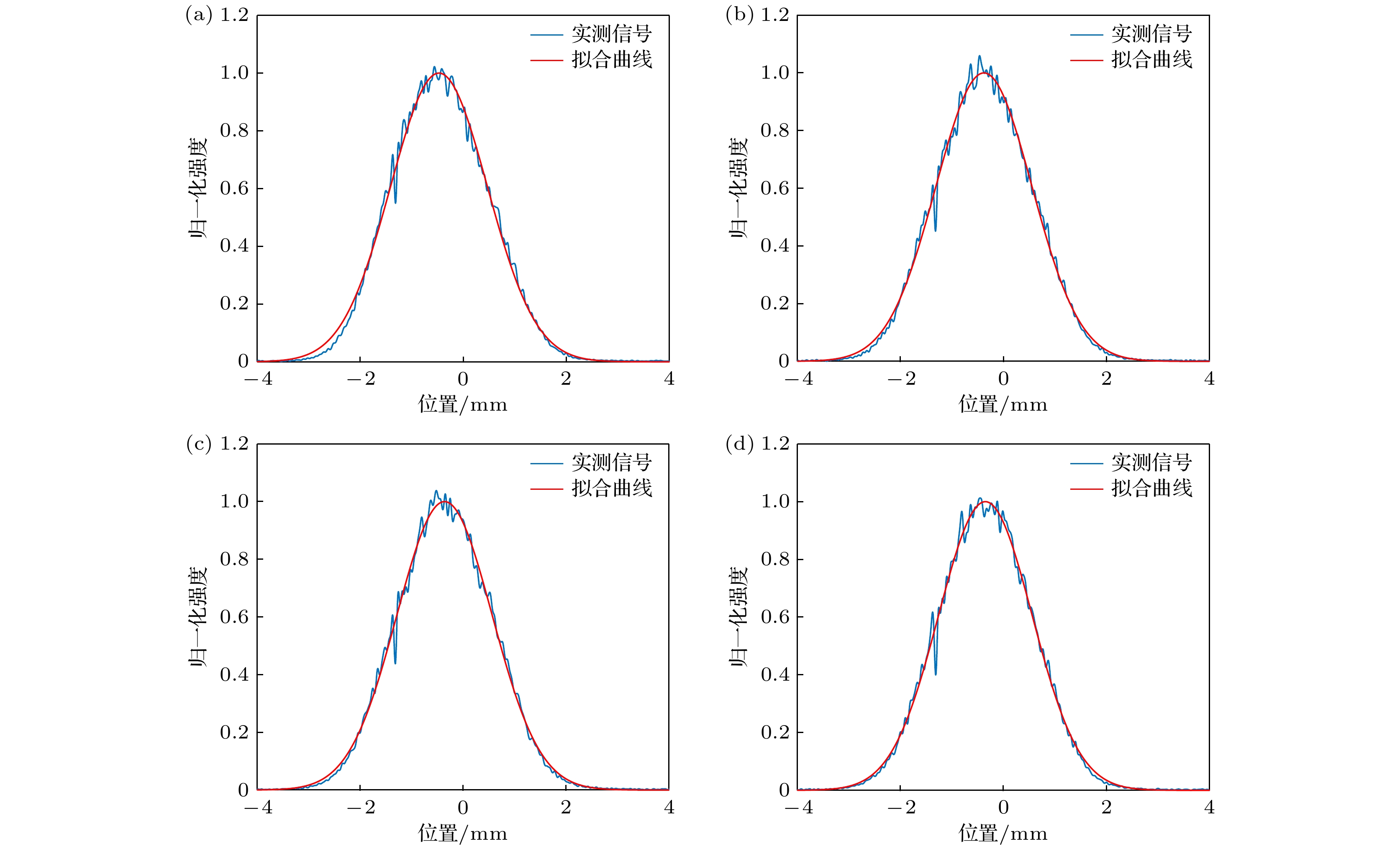-
通过倍频技术产生的532 nm固体激光器是目前应用最广泛的激光器之一, 其最常用的倍频晶体三硼酸锂(LBO)在角度鲁棒性与倍频效率上仍有不足. 为获得具有较好的角度鲁棒性的倍频晶体, 实现激光器结构复杂度的降低与稳定性的提升, 本文从角度鲁棒性的理论分析出发, 对啁啾周期极化铌酸锂(CPPLN)晶体的结构进行设计, 并对其进行理论仿真与实验测试. 模拟仿真的结果表明, 该设计结构的CPPLN晶体具有良好的角度鲁棒性, 在
$ - {3^ \circ } $ 至$ + {3^ \circ } $ 的范围内倍频效率一直维持在最高倍频效率的60%以上. 倍频实验的结果显示可以达到LBO晶体的11倍以上. 同时CPPLN晶体的倍频光功率关于入射角度的半高宽可以达到$ {6^ \circ } $ 以上, 并且出射光斑为标准的高斯光斑, 几乎不受入射角度的影响. 研究表明, CPPLN晶体具有远高于LBO晶体的倍频效率, 且角度鲁棒性优于LBO晶体的角度鲁棒性.-
关键词:
- 非线性光学 /
- 啁啾周期极化铌酸锂晶体 /
- 腔外倍频 /
- 角度鲁棒性
A 532-nm solid-state laser, generated by second-harmonic generation (SHG) technology, has become one of the most extensively used lasers in various applications today. In the traditional scheme, the most prevalent SHG crystal of the 532-nm solid-state is lithium borate (LBO), and continues to exhibit insufficient angular robustness and SHG efficiency. In order to overcome these limitations and obtain SHG crystals with better angular robustness, this study starts with a comprehensive theoretical analysis of angular robustness. On this basis, the structure of a chirped periodically poled lithium niobate (CPPLN) crystal is designed by taking into account the desired properties for improving its performance, and then the theoretical simulations and experimental tests are implemented to validate the effectiveness of the designed crystal. The simulation results corroborate the superior angular robustness of the CPPLN crystal. In a range from$ - {3^ \circ } $ to$ + {3^ \circ } $ , the designed CPPLN crystal exhibits a maximum SHG efficiency of 0.80% and a minimum one of 0.51%, which indicates that the SHG efficiency of this crystal in this range can be maintained at 60% of the maximum efficiency. The experimental results show that the SHG efficiency can be more than 11 times that of LBO crystal. Moreover, the study indicates that the half width of the actual SHG efficiency near the incident angle of the designed CPPLN crystal can exceed$ {6^ \circ } $ , demonstrating its excellent tolerance for changes in incident angle. Furthermore, the output spot of the SHG light generated by the designed CPPLN crystal exhibits a standard Gaussian profile, which remains virtually unaffected by the incident angle. In summary, the findings of this research highlight the CPPLN crystal as a promising alternative to LBO, with markedly higher SHG efficiency and better angular robustness. These superior characteristics make the CPPLN crystal a highly attractive candidate for a wide range of laser applications.-
Keywords:
- nonlinear optics /
- chirped periodically poled lithium niobate crystal /
- angle robustness /
- extracavity frequency doubling
[1] Franken P A, Hill A E, Peters C W, Weinreich G 1961 Phys. Rev. Lett. 1 7 118
 Google Scholar
Google Scholar
[2] Sharma A, Jain V, Gupta D 2018 Measurement 128 254
 Google Scholar
Google Scholar
[3] Kartopu G, Oklobia O, Tansel T, Jones S, Irvine S J 2023 Solar Energy Mater. Sol. Cells 251 112112
 Google Scholar
Google Scholar
[4] 彭亚军, 黄颖 2023 江西医药 58 977
 Google Scholar
Google Scholar
Peng Y J, Huang Y 2023 Jiangxi Med. J. 58 977
 Google Scholar
Google Scholar
[5] 刘宇欢, 陈建伟, 杨洲 2023 糖尿病新世界 26 172
Liu Y H, Chen J Y, Yang Z 2023 Diabetes New World 26 172
[6] Penide G, Szczap F, Delanoë J 2024 AIP Conference Proceedings 2988 030004
[7] Studinger M, Smith B E, Kurtz N, Petty A, Sutterley T, Tilling R 2023 The Cryosphere Discussions 2023 1
[8] Wang X K, Zhou Z Y, Li M D, Zheng Y G, Zhang W Y, Su G X 2022 Rev. Sci. Instrum. 93 123002
 Google Scholar
Google Scholar
[9] Li D, Yan B, Yuan Y, Cai Y, Hao Z, Li J 2024 J. Lightwave Technol. 2024 1
[10] Li F, Zhang X, Li J, Wang J, Shi S, Tian L, Wang Y, Chen L, Zheng Y 2023 Front. Phys. 18 42303
 Google Scholar
Google Scholar
[11] 廖骎, 柳海杰, 王铮, 朱凌瑾 2023 物理学报 72 040301
 Google Scholar
Google Scholar
Liao Q, Liu H J, Wang Z, Zhu L J 2023 Acta Phys. Sin. 72 040301
 Google Scholar
Google Scholar
[12] Ramesh K S, Munusamy S, Saravanakumar M, Manigandan S, Muthusamy K, Vinitha G, Sekar M 2024 J. Mater. Sci.-Mater. Electron. 35 329
 Google Scholar
Google Scholar
[13] 李天胤, 邢宏喜, 张旦波 2023 物理学报 72 200303
 Google Scholar
Google Scholar
Li T Y, Xing H X, Zhang D B 2023 Acta Phys. Sin. 72 200303
 Google Scholar
Google Scholar
[14] Ganeev R A 2023 Photonics 10 854
 Google Scholar
Google Scholar
[15] Seres E, Seres J, Martinez-de-Olcoz L, Schumm T 2024 Opt. Express 32 17593
 Google Scholar
Google Scholar
[16] Li M, Hong L, Li Z Y 2022 Research 2022 1
 Google Scholar
Google Scholar
[17] Hong L, Chen B, Hu C, Li Z Y 2022 Photonics Research 10 905
 Google Scholar
Google Scholar
[18] Hong L, Hu C, Liu Y, He H, Liu L, Wei Z, Li Z Y 2023 PhotoniX 4 1
 Google Scholar
Google Scholar
[19] Hong L, Yang H, Liu L, Li M, Liu Y Chen B, Yu H, Ju W, Li Z Y 2023 Research 6 0210
 Google Scholar
Google Scholar
[20] Martin K I, Clarkson W A, Hanna D C 1997 Appl. Opt. 36 4149
 Google Scholar
Google Scholar
[21] Zhang C, Lu H, Yin Q, Su J 2014 Appl. Opt. 53 6371
 Google Scholar
Google Scholar
[22] Armstrong J A, Bloembergen N, Docuing J, Pershan P S 1962 Phys. Rev. 127 1918
 Google Scholar
Google Scholar
[23] Yamada M, Nada N, Saitoh M, Watanabe K 1993 Appl. Phys. Lett. 62 435
 Google Scholar
Google Scholar
[24] Sakai K, Koyata Y, Itakura S, Hirano Y 2009 J. Lightwave Technol. 27 590
 Google Scholar
Google Scholar
[25] Kang Y, Yang S, Brunel M, Cheng L, Zhao C, Zhang H 2017 Appl. Opt. 56 2968
 Google Scholar
Google Scholar
[26] Lai J Y, Hsu C S, Hsu C W, Wu D Y, Wu K, Chou M H 2019 Nonlinear Frequency Generation and Conversion: Materials and Devices XVIII 10902 8
[27] Peng L, Hong L, Li Z 2021 Phys. Rev. A 104 053503
 Google Scholar
Google Scholar
-
图 3 倍频实验结果对比 (a) CPPLN; (b) LBO, 入射角变化方向平行于偏振方向; (c) LBO, 入射角变化方向垂直于偏振方向
Fig. 3. Comparison of SHG experiment results: (a) CPPLN; (b) LBO, the angle of incidence changes in a direction parallel to the direction of polarization; (c) LBO, the angle of incidence changes in a direction perpendicular to the direction of polarization.
图 4 角度鲁棒性实验结果 (a) CPPLN; (b) LBO, 入射角变化方向平行于偏振方向; (c) LBO, 入射角变化方向垂直于偏振方向
Fig. 4. Results of the angular robustness experiment: (a) CPPLN; (b) LBO, the angle of incidence changes in a direction parallel to the direction of polarization; (c) LBO, the angle of incidence changes in a direction perpendicular to the direction of polarization.
图 5 CPPLN与LBO倍频实验输出光斑对比 (a), (b), (c), (d) CPPLN 分别在$ - {1^ \circ } $, $ {0^ \circ } $, $ + {1^ \circ } $和$ + {2^ \circ } $条件下的光斑; (e) , (f), (g), (h) 当角度在平行于偏振方向上变化时, LBO 分别在$ - {1^ \circ } $, $ {0^ \circ } $, $ + {1^ \circ } $和$ + {2^ \circ } $条件下的光斑; (i), (j), (k), (l) 当角度在垂直于偏振方向上变化时, LBO 分别在$ - {0.3^ \circ } $, $ {0^ \circ } $, $ + {0.3^ \circ } $和$ + {0.6^ \circ } $条件下的光斑
Fig. 5. Comparison of output light spots between CPPLN and LBO SHG experiments: (a), (b), (c) (d) The output spots of CPPLN at $ - {1^ \circ } $, $ {0^ \circ } $, $ + {1^ \circ } $和$ + {2^ \circ } $, respectively; (e), (f), (g), (h) the output spots of LBO when the angle changes parallel to the direction of polarization under conditions of $ - {1^ \circ } $, $ {0^ \circ } $, $ + {1^ \circ } $和$ + {2^ \circ } $ respectively; (i), (j), (k), (l) the output spots of LBO when the angle changes perpendicular to the direction of polarization under conditions of $ - {0.3^ \circ } $, $ {0^ \circ } $, $ + {0.3^ \circ } $和$ + {0.6^ \circ } $, respectively.
-
[1] Franken P A, Hill A E, Peters C W, Weinreich G 1961 Phys. Rev. Lett. 1 7 118
 Google Scholar
Google Scholar
[2] Sharma A, Jain V, Gupta D 2018 Measurement 128 254
 Google Scholar
Google Scholar
[3] Kartopu G, Oklobia O, Tansel T, Jones S, Irvine S J 2023 Solar Energy Mater. Sol. Cells 251 112112
 Google Scholar
Google Scholar
[4] 彭亚军, 黄颖 2023 江西医药 58 977
 Google Scholar
Google Scholar
Peng Y J, Huang Y 2023 Jiangxi Med. J. 58 977
 Google Scholar
Google Scholar
[5] 刘宇欢, 陈建伟, 杨洲 2023 糖尿病新世界 26 172
Liu Y H, Chen J Y, Yang Z 2023 Diabetes New World 26 172
[6] Penide G, Szczap F, Delanoë J 2024 AIP Conference Proceedings 2988 030004
[7] Studinger M, Smith B E, Kurtz N, Petty A, Sutterley T, Tilling R 2023 The Cryosphere Discussions 2023 1
[8] Wang X K, Zhou Z Y, Li M D, Zheng Y G, Zhang W Y, Su G X 2022 Rev. Sci. Instrum. 93 123002
 Google Scholar
Google Scholar
[9] Li D, Yan B, Yuan Y, Cai Y, Hao Z, Li J 2024 J. Lightwave Technol. 2024 1
[10] Li F, Zhang X, Li J, Wang J, Shi S, Tian L, Wang Y, Chen L, Zheng Y 2023 Front. Phys. 18 42303
 Google Scholar
Google Scholar
[11] 廖骎, 柳海杰, 王铮, 朱凌瑾 2023 物理学报 72 040301
 Google Scholar
Google Scholar
Liao Q, Liu H J, Wang Z, Zhu L J 2023 Acta Phys. Sin. 72 040301
 Google Scholar
Google Scholar
[12] Ramesh K S, Munusamy S, Saravanakumar M, Manigandan S, Muthusamy K, Vinitha G, Sekar M 2024 J. Mater. Sci.-Mater. Electron. 35 329
 Google Scholar
Google Scholar
[13] 李天胤, 邢宏喜, 张旦波 2023 物理学报 72 200303
 Google Scholar
Google Scholar
Li T Y, Xing H X, Zhang D B 2023 Acta Phys. Sin. 72 200303
 Google Scholar
Google Scholar
[14] Ganeev R A 2023 Photonics 10 854
 Google Scholar
Google Scholar
[15] Seres E, Seres J, Martinez-de-Olcoz L, Schumm T 2024 Opt. Express 32 17593
 Google Scholar
Google Scholar
[16] Li M, Hong L, Li Z Y 2022 Research 2022 1
 Google Scholar
Google Scholar
[17] Hong L, Chen B, Hu C, Li Z Y 2022 Photonics Research 10 905
 Google Scholar
Google Scholar
[18] Hong L, Hu C, Liu Y, He H, Liu L, Wei Z, Li Z Y 2023 PhotoniX 4 1
 Google Scholar
Google Scholar
[19] Hong L, Yang H, Liu L, Li M, Liu Y Chen B, Yu H, Ju W, Li Z Y 2023 Research 6 0210
 Google Scholar
Google Scholar
[20] Martin K I, Clarkson W A, Hanna D C 1997 Appl. Opt. 36 4149
 Google Scholar
Google Scholar
[21] Zhang C, Lu H, Yin Q, Su J 2014 Appl. Opt. 53 6371
 Google Scholar
Google Scholar
[22] Armstrong J A, Bloembergen N, Docuing J, Pershan P S 1962 Phys. Rev. 127 1918
 Google Scholar
Google Scholar
[23] Yamada M, Nada N, Saitoh M, Watanabe K 1993 Appl. Phys. Lett. 62 435
 Google Scholar
Google Scholar
[24] Sakai K, Koyata Y, Itakura S, Hirano Y 2009 J. Lightwave Technol. 27 590
 Google Scholar
Google Scholar
[25] Kang Y, Yang S, Brunel M, Cheng L, Zhao C, Zhang H 2017 Appl. Opt. 56 2968
 Google Scholar
Google Scholar
[26] Lai J Y, Hsu C S, Hsu C W, Wu D Y, Wu K, Chou M H 2019 Nonlinear Frequency Generation and Conversion: Materials and Devices XVIII 10902 8
[27] Peng L, Hong L, Li Z 2021 Phys. Rev. A 104 053503
 Google Scholar
Google Scholar
计量
- 文章访问数: 3552
- PDF下载量: 85
- 被引次数: 0



















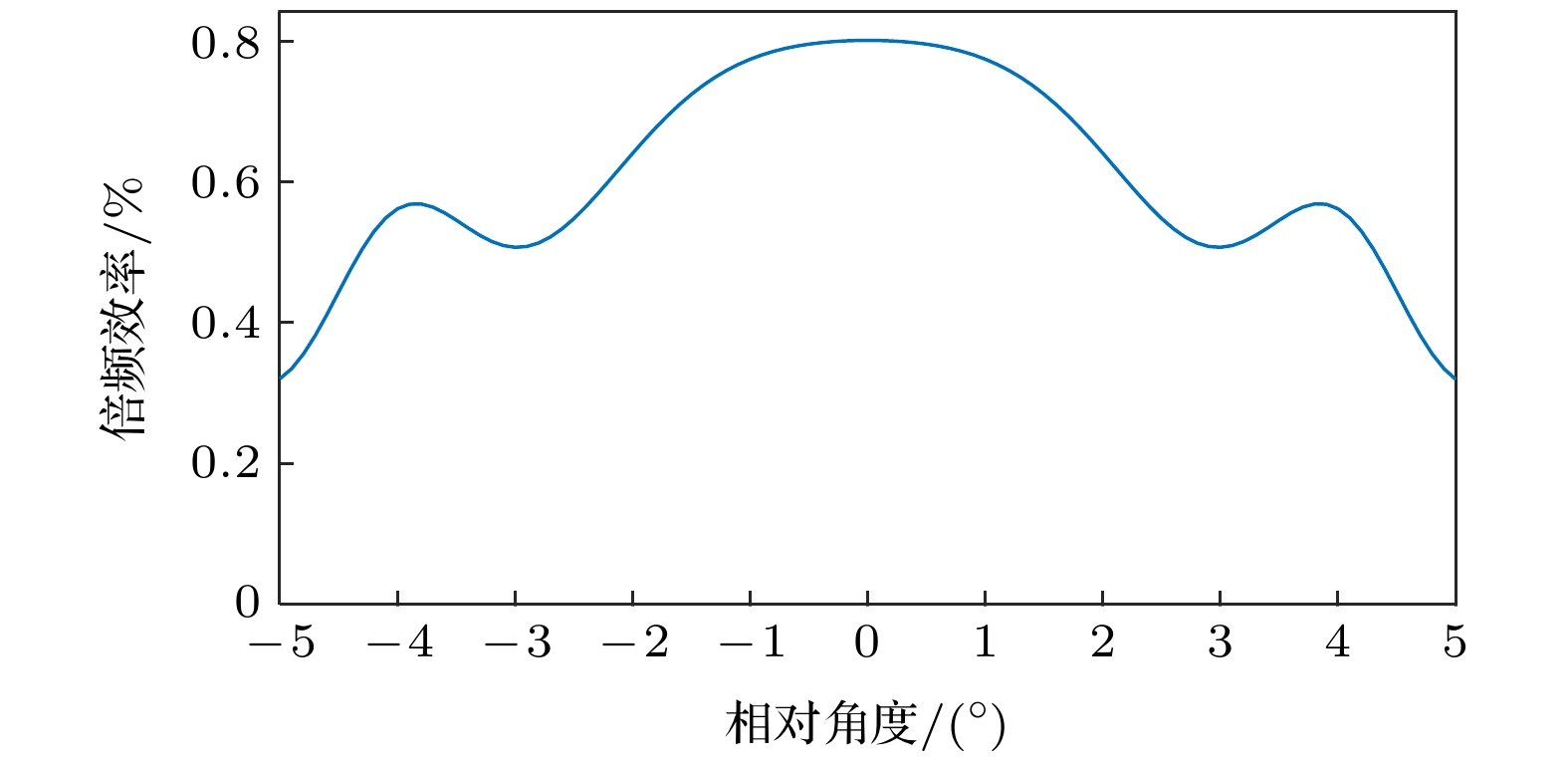
 下载:
下载:

